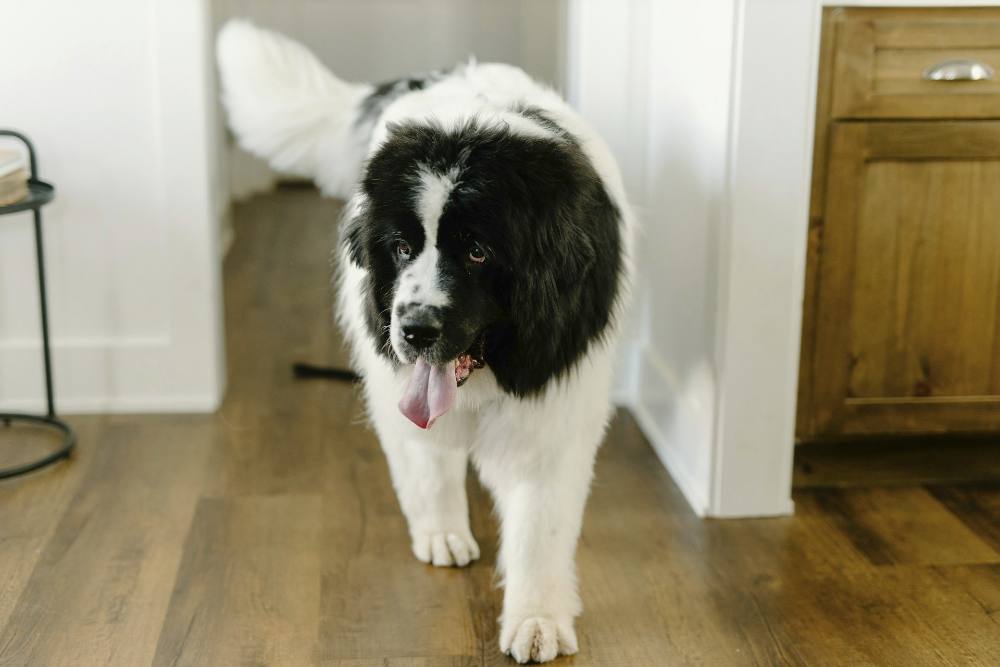How Pets Can Impact Slip and Fall Accidents in Your Home
Unfortunately, slip and fall accidents involving pets are more common than you might think. While our beloved companions bring us endless joy and laughter, they can also unwittingly create hazards that lead to injuries.
As the owner of the pet, you have an obligation to keep your home and guests safe from any slip and fall accidents in Long Beach. See what types of accidents may occur, as well as prevention strategies.
Contents
Paw Prints and Puddles:
One of the most common ways pets contribute to slip and fall accidents is by tracking in water, mud, or other substances on their paws. Whether they’ve been playing outside in the rain or simply taken a stroll through a damp area, their wet feet can create slippery surfaces indoors. This is particularly problematic on hardwood or tile floors, where traction is already limited.
To mitigate this risk, consider placing absorbent mats or rugs near entrances to capture dirt and moisture from your pet’s paws before they have a chance to spread it throughout the house. Another prevention method to use is to wipe your pet’s paws after coming in from outside.
Toy Traps
Another hazard to watch out for is pet toys left scattered around the house. While it’s endearing to see your furry friend’s toys strewn about, they can quickly become tripping hazards, especially in areas with poor lighting or cluttered spaces.
To prevent accidents, establish designated play areas for your pet and make it a habit to tidy up their toys regularly. Additionally, be mindful of where you place their toys to avoid obstructing walkways or high-traffic areas.
Overenthusiastic Greetings
We all love the exuberant greetings our pets give us when we return home, but sometimes their enthusiasm can lead to accidents. Whether it’s a large dog jumping up to greet you or a cat weaving between your legs, these interactions can result in collisions or unintentional knocking over of individuals, leading to falls.
To prevent this, consider training your pet to greet calmly or teaching them to wait in a specific area upon entering the home. Consistency and positive reinforcement are key to modifying their behavior.
Leash Tangles
For pet owners who take their furry friends on walks, leash tangles can pose a significant risk. A tangled leash around your legs or obstacles can cause sudden jerks or loss of balance, potentially resulting in a fall. To minimize this risk, be mindful of how you hold your pet’s leash and try to keep it untangled as much as possible.
Additionally, consider using a hands-free leash or a retractable leash with a locking mechanism to maintain better control.
Pet-Related Spills:
Spills from pet water bowls or food dishes are another common cause of slip and fall accidents in the home. It’s easy for these spills to go unnoticed, especially if they occur in areas with heavy foot traffic. To prevent accidents, use non-slip bowls or mats under your pet’s dishes to catch any spills and clean up any messes promptly.
Additionally, consider placing pet dishes in areas where spills are less likely to occur, such as on tiled or linoleum floors rather than carpeted areas.
Aging Pets and Mobility Issues:
As our pets age, they may experience mobility issues or other health problems that can increase the risk of accidents. Whether it’s arthritis, vision loss, or cognitive decline, these conditions can make pets more prone to bumping into their owners or obstructing pathways, leading to falls.
To accommodate aging or disabled pets, consider making adjustments to your home environment, such as installing ramps or pet stairs to help them navigate stairs or providing extra support and stability around slippery surfaces.
Preventative Measures:
Now that we’ve covered some of the common ways pets can contribute to slip and fall accidents, let’s discuss preventative measures you can take to keep your home safe:
- Keep pet areas tidy and free from clutter to minimize tripping hazards.
- Use pet-friendly mats or rugs near entrances to capture dirt and moisture from your pet’s paws, or even wipe their paws before entering.
- Establish designated play areas for your pet and regularly tidy up their toys to prevent accidents.
- Train your pet to greet calmly or wait in a specific area upon entering the home to minimize collisions.
- Use non-slip bowls or mats under pet dishes to prevent spills.
- Be mindful of aging or disabled pets’ movements and make necessary adjustments to your home environment to accommodate their needs.
Conclusion:
In conclusion, while our pets bring us endless joy and companionship, it’s essential to be aware of the potential hazards they can pose in our homes. By taking proactive measures to identify and address these hazards, we can create a safer environment for both ourselves and our furry friends. Remember, a little prevention goes a long way when it comes to keeping your home free from slip and fall accidents.

